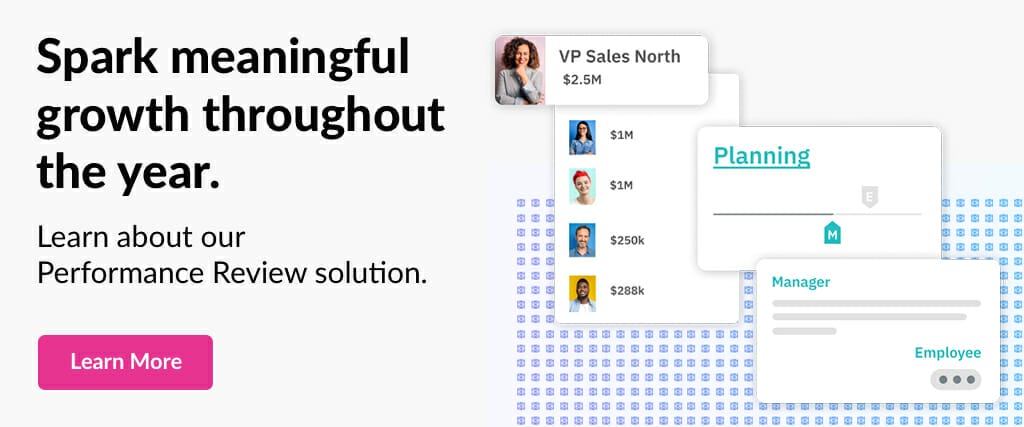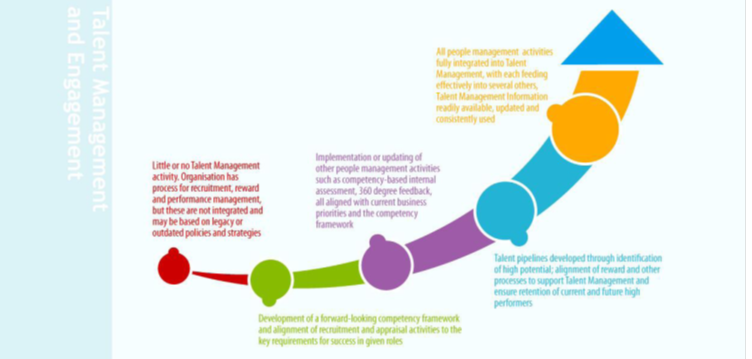How Mature Is Your Talent Management Process?
How Mature Is Your Talent Management
The foundations of talent management that underpin these activities are often formed by a combination of resources, such as role profiles, HR databases, training and development provisions, internal/external coaches and mentors, executive search functions, and the data kept and maintained in a responsible manner (in line with data protection laws, for instance). Most importantly, your biggest resource (your managers and leaders) are a part of these activities and their engagement will shape its effectiveness. Let’s consider some examples. How might talent management activities be implemented in three different types of organizations?
A large, multinational financial services organization employing 30,000 people.
Talent management here is dominated by developing and bringing in the brightest, freshest talent. Identifying and nurturing the next tranche of high performers is the central aim, with graduate recruitment programs, targeted assessment for key roles and comprehensive training, development, and job rotation activities in order to get high potentials up to high performer status. Mobility is also important. Operating globally, this organization needs to identify its global leaders of tomorrow, those with the potential to successfully lead operations in one or any of its many overseas businesses. A balance is sought between sourcing talent locally, and expatriating leaders from headquarters.
A small local authority employing 350 people.
Significant budget cuts have had a severe impact on recruitment and development activities. The organization is in a constant state of change and everyone is being asked to ‘do more with less.’ The HR department has held a series of discussions with the senior management team to identify which roles are mission-critical and are in the process of using 360 degree feedback and performance management information to identify potential successors to these roles. They have created an internal ‘talent pool’ that consists of those who constantly exceed expectations and perform at a higher than average level. The talent pool cohort meets on a regular basis with the aims of sharing learning and experience, brainstorming issues and problems, co-coaching each other, and carrying out specific organizational projects. Where possible, key positions are filled from within the talent pool.
A small, family-owned business that buys and distributes wine.
Turnover tends to be low, and there is little churn, particularly at senior levels. The HR department consists of one person and the organization is just starting to think about how it is going to survive the impending retirement of the CEO. They have conducted research and developed a competency framework and are aligning their recruitment to sales and administrative roles in line with this. The challenge is now to identify potential successors from within and outside the business to the top three roles. The HR partner is drawing up role profiles for all jobs, incorporating aspects of the new competency framework. They have engaged the support of a small local consultancy to help them run a series of development centers to help identify any potential future managers, and they are putting in place a series of short management skills workshops. They are also considering a job-shadowing program, where people at all levels will be accompanying the CEO on his trips. Knowledge management is an issue—the CEO is the one who has built and maintained the majority of the client relationships and who also has in-depth understanding of the wine-buying process. The HR partner is now focusing on distilling this knowledge and ensuring that others can continue to grow the company.
It is worthwhile assessing your organization in terms of its talent management maturity by asking yourself some questions:
- How does your organization currently fill key positions?
- How successful are your recruitment efforts?
- Do you have a company-specific, up-to-date competency framework?
- If you have a competency framework, how do you know it does what it needs to do?
- Do you know who will take over key positions once they become vacant?
- How well aligned is your performance management process to the strategic aims and plans of the organization?
- How often do people get feedback within the organization, and what is the quality of the feedback they get?
- How do people get promoted? Are there consistent, fair, and transparent processes in place to support movement within and upwards in the company?
- Who are the best people in your organization?
- What are you doing to keep these individuals?
With this information, locate your organization on the chart below and we will further explore these phases in our next post.
How Mature Is Your Talent Management Process? Give us a call to level up!
Talent Management- Why It’s Important
Talent management has broadly existed in various forms for many years, with organizations using such processes as succession planning and competency frameworks to identify and develop their high potential employees. The term itself was coined in the late 1990s, gaining particular momentum as firms tuned into the fact that having a consistent and focused approach […]
Common Mistakes Made in IDP Planning
5 Common Mistakes Made in IDP Planning Companies must create a culture that encourages career and skill development of employees. Planning for continuous employee development must be anchored to mission-critical competencies as well as the goals and mission of the organization. If you are establishing or improving your performance management process, take stock of the […]





